The Japanese fashion brand “spoken words project” has a reputation for its clothes made uniquely with hand-dyed or hand-printed technique. Masahiro Tobita, who has nurtured the brand, is currently involved in a wide range of activities surpassing the fashion field such as stage costume design, scenography, and textile design as well as creating clothing. Tobita’s “spoken words project” teamed up with Kokka to create a new textile brand named “3min.” which made a cool debut in June, 2016. Here is an extensive interview with Tobita who is pursuing something new. This will show you what is behind his design work.
I always wanted to do something different from the others, and I was really competitive. My everyday clothes were made by my mother who had studied at Bunka Fashion College, Japan’s leading fashion school. Indeed, I wore them delightedly.
In my junior high years, I got interested in fashion. I frequented secondhand clothes shops in Harajuku. There had been many thrift stores in Harajuku area until DC (Designer Character) brand boom arose in ‘80s when I was in high school.
I had wished to go to a high school with design department, but it was located outside of my school district. Eventually I entered a regular high school in compliance with my father who was a strictly traditional Japanese male.
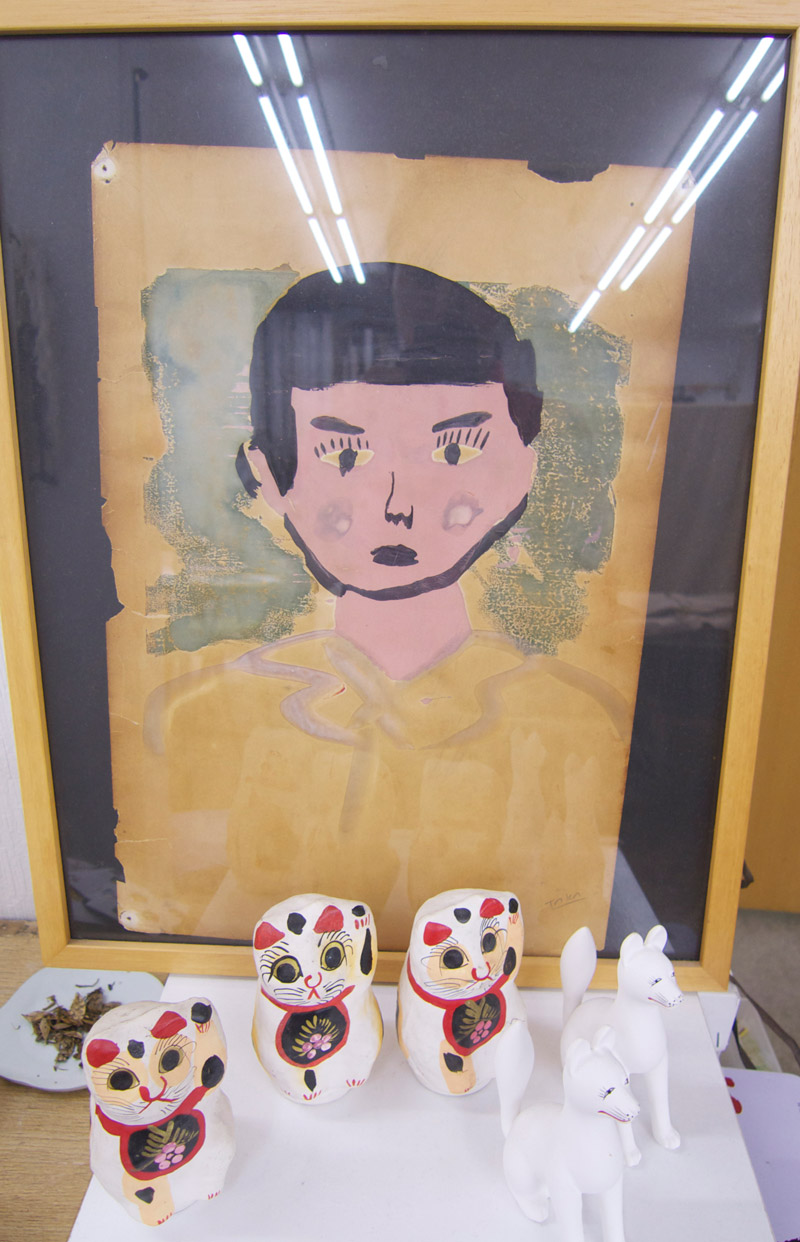
(pic: This woodblock print is Tobita’s art project in his junior high years titled “Portrait of My Friend”)
I wanted to be a creator during my high school years because I got very interested in advertising. In those days, the copywriter Shigesato Itoi was in public limelight and I watched many high-budget commercials on TV.
My obsession with words might be my mother’s influence. She had always urged me to read books since I was little. In my junior days, I had already read “Almost Transparent Blue”, which is Ryu Murakami’s novel for grown-ups.
As for copywriting, I had won awards in various copywriting contests in my junior and high school days, including the ones hosted by Japanese popular magazines such as “Popeye” and “an.an”,
And, music! I listened to not only pop music but also punk rocks under the influence of my older brother who played in a hard rock band. I really liked a Japanese pop/rock band Southern All Stars, but I couldn’t listen to their pop style songs when I was with my brother. I also got into the Japanese urban-soul artists including Happy End or Tatsuro Yamashita.
*) Ronin (student) – In Japan, “Ronin (student)” is a student who has graduated from middle school or high school but has failed to enter a school at the next level, and consequently is studying outside of the school system for entrance in a future year. [wikipedia]
My strict father said “Go to Tokyo University of the Arts if you want to master art. That is only one art school I can allow you to study at.” To enter the highest and most difficult-to-enter art school, I went to study at a college-prep school specializing in entrance exam for art colleges. Eventually I ended up going to Tama Art University with failure on the 4th attempt on the entrance exam of Tokyo University of the Arts. While studying at the college-prep school for 4 years, I had absorbed a lot of things about design and art like a sponge. I have greatly benefitted from the experience and knowledge I had obtained there.
In my junior and senior year at college, I wrote down words on each paper such as “town” or “sex”, which popped up in my mind, to display all around the campus. In response, a contemporary art professor got interested in my displays and tried to interpret my purpose by rearranging the first uppercase like anagram. The funniest thing was that a student earnestly advised me to do business with my verbal arts.
Accordingly, I started the “spoken words” project associating with poems and tales. My rock band since high school had taken a lot of effort to draw audiences because it was just one among millions of amateur bands. So, I intended to make my band out to be a different one from others with catchy introduction line “spoken words project presents”.
I participated in some poetry reading events, too. I tried to bring the method for reading poem in my band’s musical form, but couldn’t make it. At last, my band split up when I was senior in college.
I had studied really hard for 4 years at the college-prep school. Once I entered college, I got no stimulating experiences there. I had expected that art school students would have been unique and deeply in their own world for creative activity. But the reality was that they were ordinary. I was kind of disappointed, and I frequently skipped classes. Thanks to teachers’ kindliness and support, I could manage to obtain enough units to graduate.
I made clothes as my college senior project. It was fun, and I found out that it was what I had longed for. Finally the senior project awakened my passion. I instantaneously thought, “I want to be a clothing creator.”
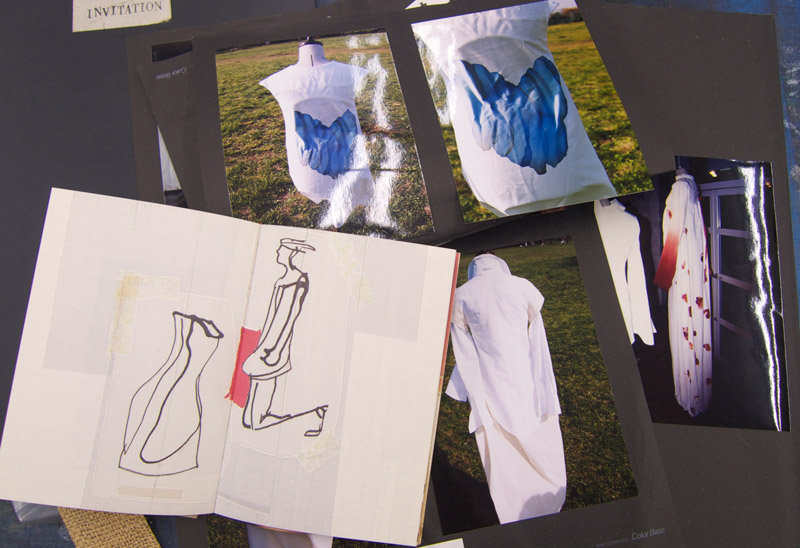
(pic: The clothes are his college senior projects. The sketch is an excerpt from the book that he self-published just after graduated from college.)
In those days, there were quite a few artists around me who innocently wanted to sculpture or paint. It was common and worthwhile for us to engage in own creative activity as well as working day jobs. While working as a part-time instructor at a college-prep school for living, I made clothes. Without any knowledge about ready-to-wear clothing, I actually had an inferiority complex for dress-making. Looking at how stage-costume creators worked, I thought I might be able to do it. Then I started my career with making stage costumes. To be honest, I was constantly wondering if it was what I really wanted to do. To find what I should pursue, I made a visit with my portfolio to Kozue Hibino, the costume artist. Hibino, who did not create everyday-wears, said to me, “You are in a fog. First, make 100 dresses!” She meant I would realize what kind of clothing I would like to create as a result of making one hundred dresses. Then what? I started and desperately took on the challenge day by day in the tiny apartment where I lived then. But I could just barely finish 30. Since I didn’t know the profession as pattern maker, I spent 2 months to complete shoulders in a jacket. Nevertheless, I felt increasingly like creating one-and-only clothing rather than ready-made apparel.
It’d been 3 or 4 years since I graduated from college when I met her and started pursuing my own creation. By adding 4 years before college, I was already in the early thirties. While making some attempt to earn my living with my creation, I started to do photo sessions with a budding new photographer, model, and makeup artist whom I had known. Our activity then evolved into a fashion show project as part of club events with cover charges. The fashion show is same as a live performance for a musician. Amid a great deal of pressure, I wanted to keep the opportunity to present my textile art through the shows. I continued the fashion shows with the intention of promoting my creations. Once my brand made a debut in Japan Fashion Week Tokyo and was featured by some fashion magazines, the scale of my own show got bigger and bigger. I could not quit it.
Though I tried to continue creating one-and-only clothes as textile art, I was too busy to keep my production style for my fashion shows. Gradually, my brand transitioned to the mass-produced apparel company. This transition should have been convenient for me to receive major order from buyers. With this change, I did nothing while pattern maker and textile wholesaler made my brand’s clothing. But in fact there was less than one buyer who was interested in talking with me about business opportunity during a few days showcase. The scale of my fashion show got bigger, my cash-flow situation got tighter. Once I needed financial support by my parents.
Such a ridiculous fashion show project, which had never brought me a huge business opportunity, did not last long. After pondering what I actually wanted to do, I decided go back to my original intention to create one-and-only clothing as my textile artwork. This policy reversal resulted in the best outcome for me. I gradually got more business opportunities. Working with an agent, I continued making exclusive clothes including the ones merchandised through Japan’s market-leading select shops like United Arrows and Baycrew’s. When I saw my “artwork” clothes displayed in the store window of United Arrows, I said to myself, “I did it!”
Yes, it was 2006 when cocca’s shop was launched in Daikanyama, Tokyo. Collaboration was offered by Chizuko Mori who was then-producer of cocca. I started making and designing textiles together with cocca. Until then, I had assumed that the textile art could not be mass-produced. So I was excited when I made it happen with cokka.
The cokka’s creative director Kana Mori and I had sought a distinct collaborative brand which we could provide more comprehensive concept covering textile and the three-dimensional form made with the textile. I thought it would be an epoch-making and exciting attempt for a fashion brand to let customers sew clothes by themselves. The 3min. embodies such an inconceivable thinking.
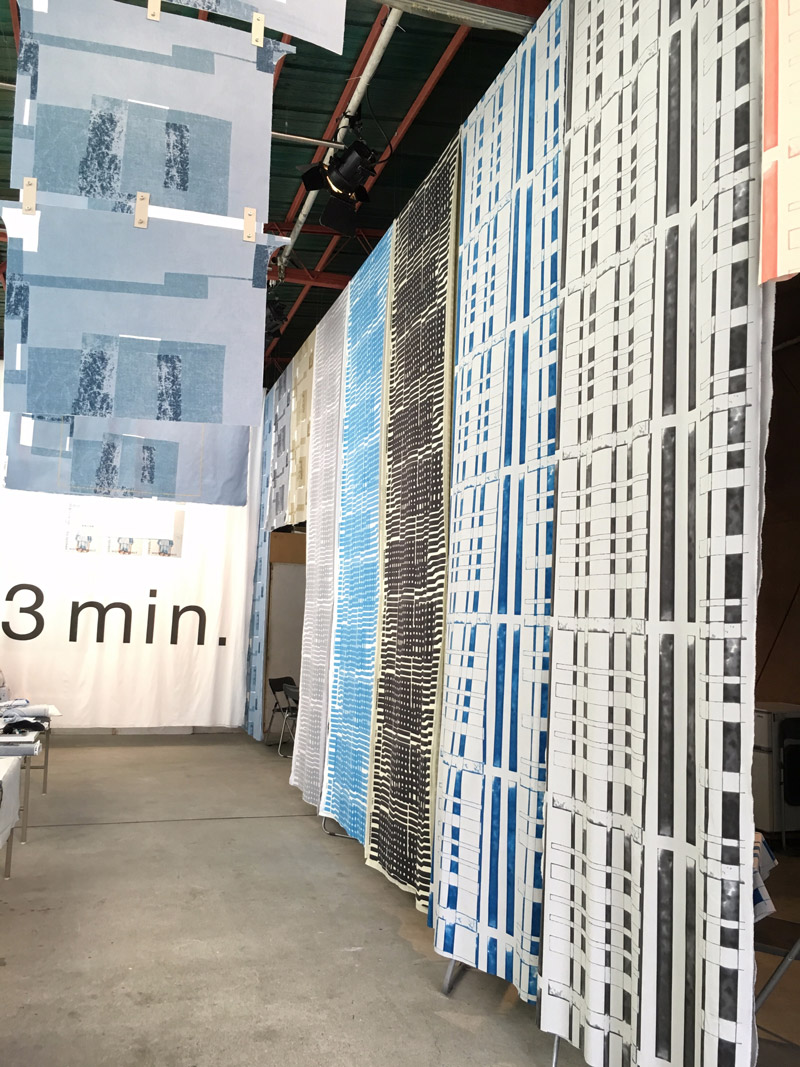
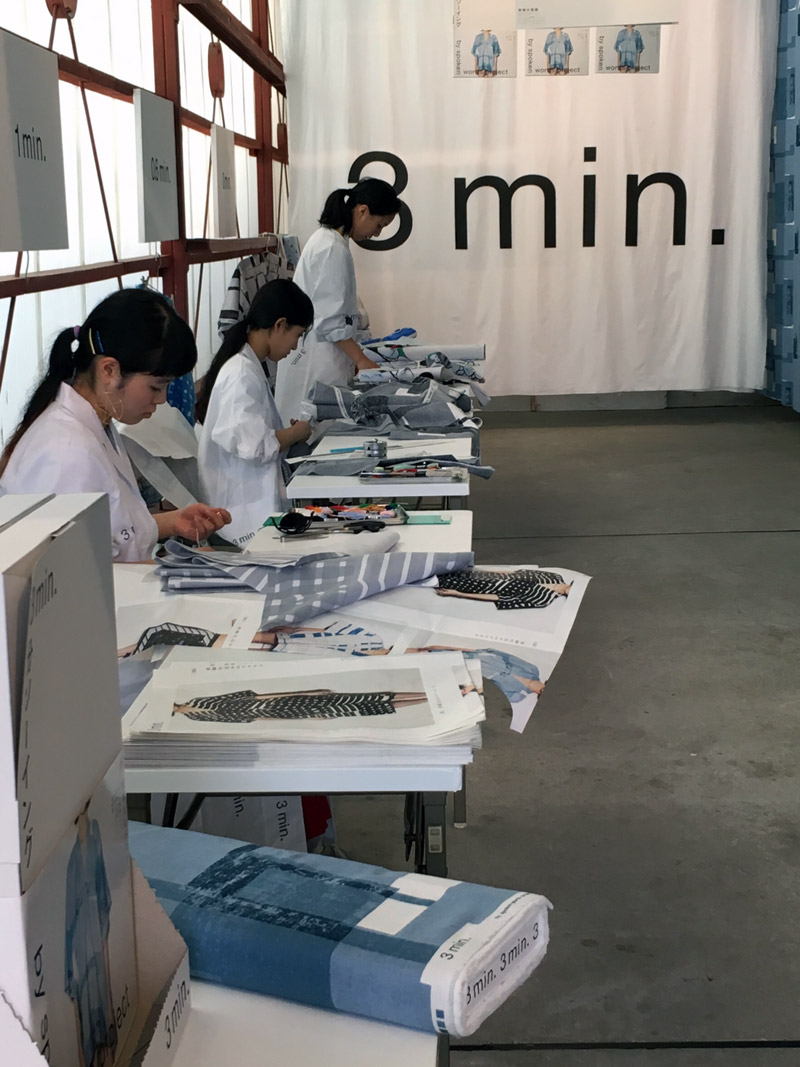
(pic: 3min.made a debut at the Kokka 2016 collection event in June. In the venue, the sewing scene was depicted in the installation art form.)
Nowadays we frequently see the pictures of grandma’s old-fashioned dishes even in fashion magazines. On the other hand, even the trendsetting Paris Fashion Week has not recently been able to define what is new. I am too untactful to run a trend-conscious business. I should confidently pursue what I like. Instead of following the trend in worldly terms, I need to keep up with my own fad. 3min. represents my stance on fashion.
I believe that you will not hesitate any more to make clothing alterations or reformation, once you make your own clothes. And you may get to know how much fun it is to make your clothes rather than buying a ready-to-wear one. It is similar to enjoy a home cooked meal instead of buying a meal.
Besides the cool-look, the main point is the textile itself. Above all, our priority is to offer good-quality products to customers. It is also important to precisely convey our product’s exceptional quality amid the information overload. I think it’s time that design and communication should exist together. I am disappointed that the old-fashioned conception sometimes makes the product underappreciated even if it is really good. I called on the graphic designer Rikako Nagashima for 3min. with the expectation that she would agree with my enthusiasm for the issue. I intend to overturn the definition of “handmade” with its fixed image of relaxed mood. By using pictures and words effectively in the website, I want to show the new concept, prospect, and direction of “handmade” to sewing lovers and professionals.
My father and I rarely agreed with each other when I was young. I failed the college entrance exams four times. Including those, I had many twists and turns in my life. The art knowledge and technique I learned at college-prep school, majoring in the dyeing & weaving design at Tama Art University… I believe that the accumulation of each single experience is the key to produce original ideas. Even though it is a pain in the butt or an indirection, I still want to try to do everything. I am the person who wants to do anything new and different. I want to pursue something new, epoch-making and innovative. It must be challenging to do something that has not been done before. And, it must be a time consumer, too.
In addition to textiles and sewing patterns, I feel the need to run workshops. I also want to create a hybrid clothing between handmade and ready-made clothes, for instance, how about a 60% finished dress?
The products of 3min. are now available at our official website (http://3min.info). The first textile series was made for the Kokka’s 2016-2017 Autumn/Winter Collection. It consists of printed brushed cotton fabrics, while many winter fabrics in the market are just solid. We are now working hard for the second series on the theme of “salad”, which will be released at the 2017 Spring & Summer Collection.
For further information about textile of 3min.;
//kokka-fabric.com/wp-kokka-en/textile-story/3min/
//kokka-fabric.com/wp-kokka-en/textile-story/3min-2/

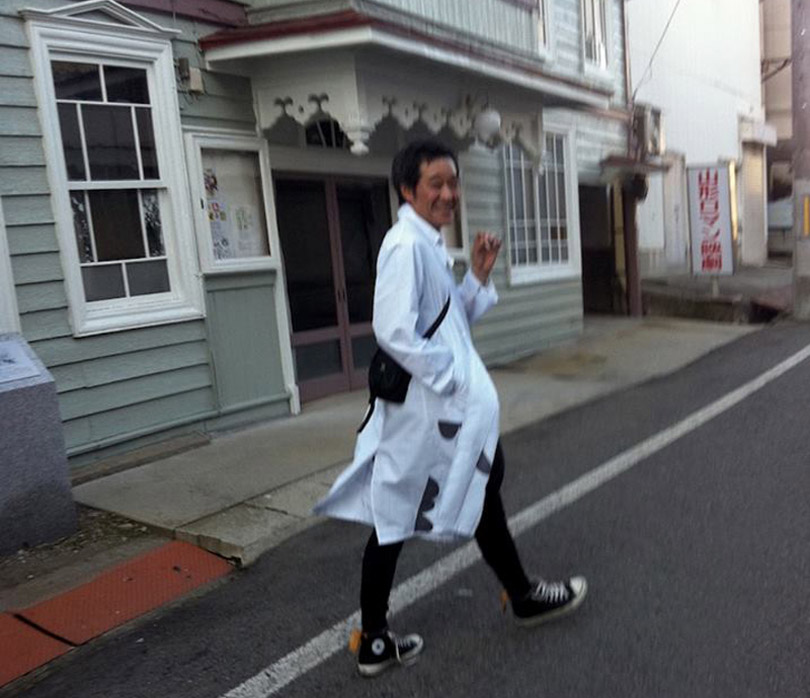

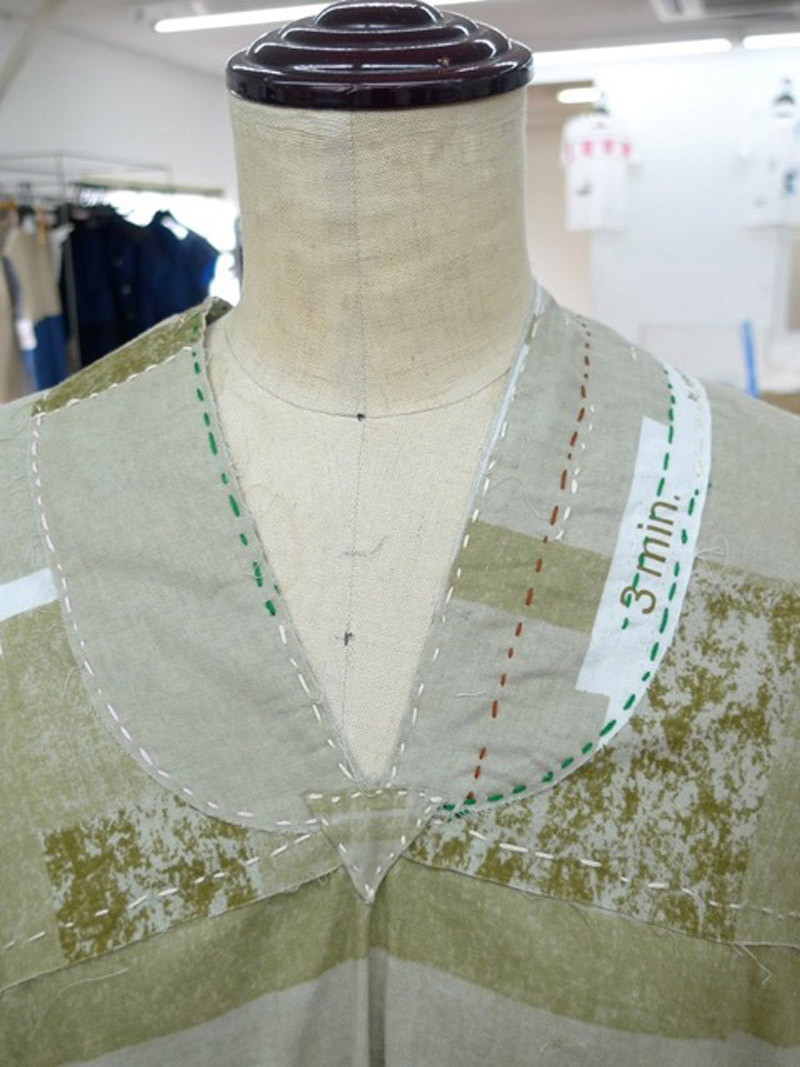

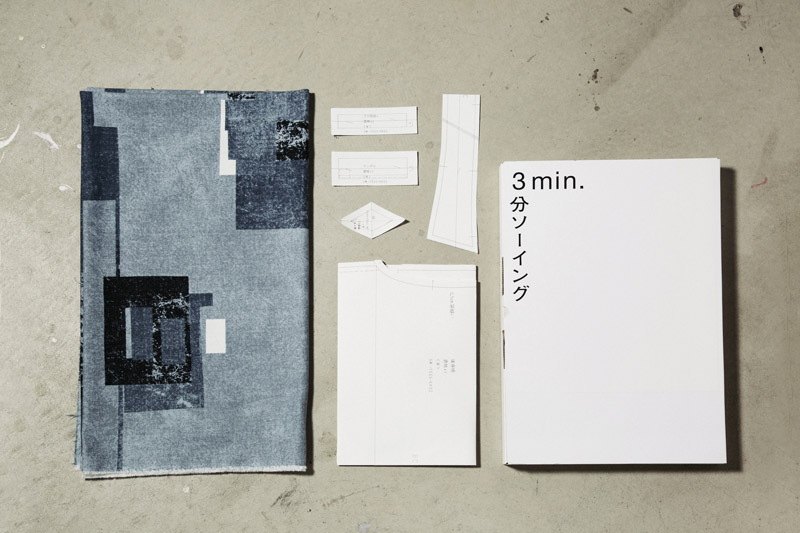
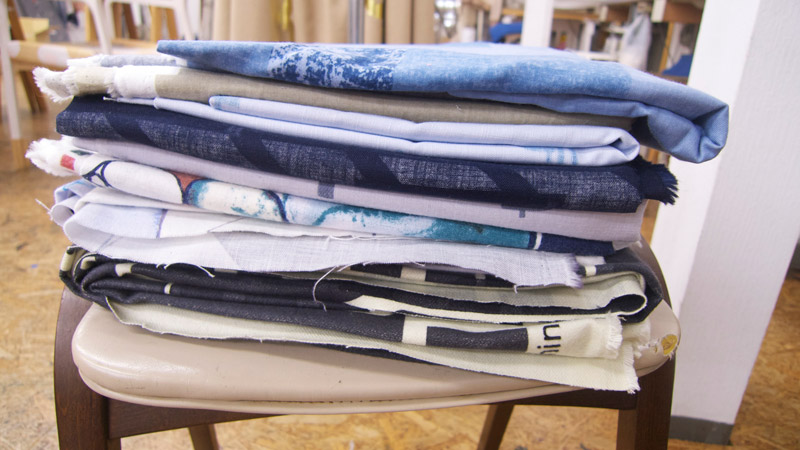
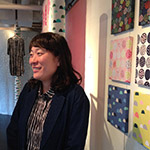 file 008
file 008  Visit artist 013: Kurara Omichi (Designer)
Visit artist 013: Kurara Omichi (Designer)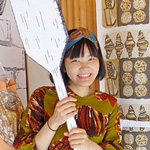 Visit Artist 016: Aco Sakamoto (Textile Designer)
Visit Artist 016: Aco Sakamoto (Textile Designer)